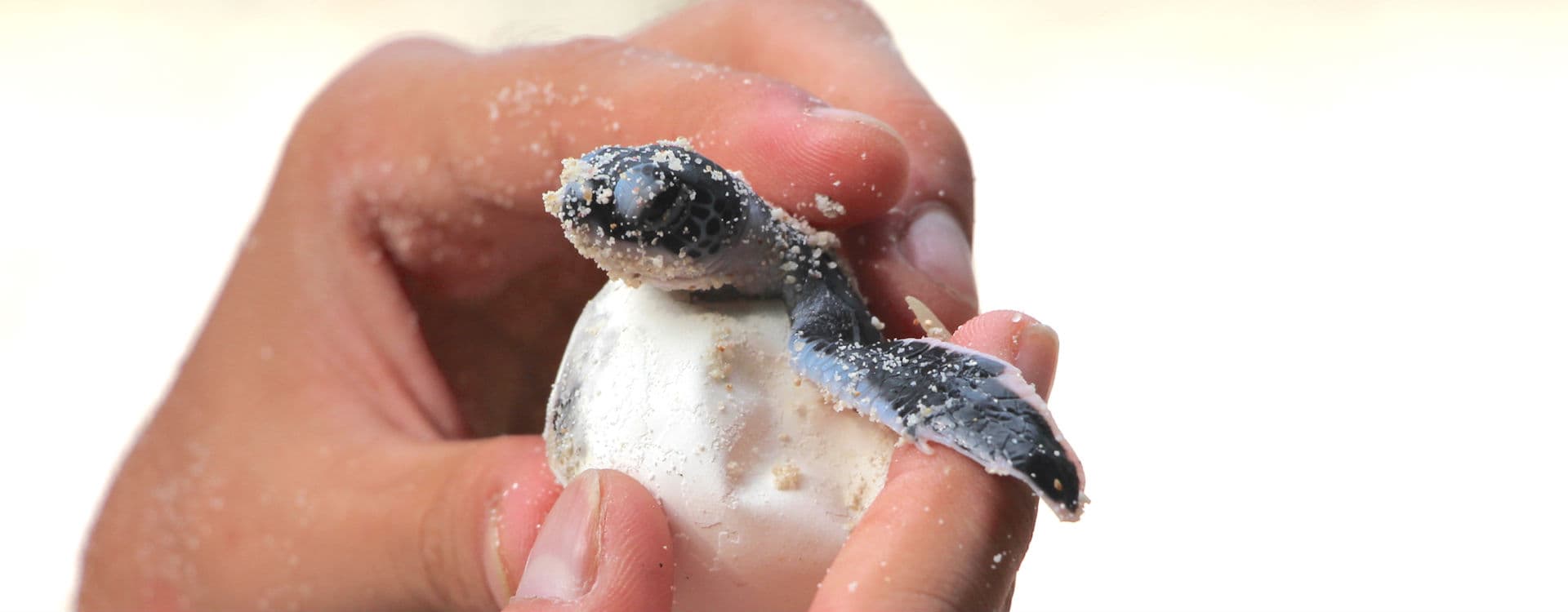We spoke to Lang Tengah Turtle Watch Project Coordinator Bill Matthews on how building a bioreactor will help in producing a healthy population of sea turtles.
Could you tell us a bit about the bioreactor project with Suria Labs?
The bioreactor project will involve building a device capable of monitoring the temperature of different areas of a turtle nest in real time. This includes the bottom, middle, sides and top of the nest. The reason for doing this is that temperature plays an important role in sea turtle development. The temperature during the middle third phase of incubation determines the sex of the hatchlings, with warm conditions producing females, while cooler conditions produce males.
Warmer temperatures also increase the rate of development, causing hatchlings to develop quicker, but at the same time it could also cause a decrease in hatchling success rate if temperatures are too high. For these reasons, knowing the temperature of the nest is extremely important in sea turtle development.
How did the idea to start this project come about?
The idea to start the project actually came from Bjarte Olsen from Suria Labs. I met him earlier this year and we were discussing our project and what we do. He contacted me a few weeks later and said Suria Labs may be able to help us with some of our nest monitoring. We began discussing possibilities and came up with the idea of building a bioreactor capable of monitoring several points within a turtle nest simultaneously as this is something we have always wanted to learn more about.

How will the bioreactor help with the turtle conservation project? How does it work?
The bioreactor will help us to monitor closely how our nests are developing. By being able to get a reading of the nest at any time we will be able to keep a close eye on the health of our turtle nests.
Keeping a close eye on the temperature throughout incubation rather than getting a reading afterwards means that we can actively adapt our management to optimise the temperature. If we see that the nests are too hot, we could apply some water to the top of the nest to mimic rainfall which will decrease the temperature. Meanwhile if the temperatures are too low, we could remove some shading to allow more sunlight in. Long-term, this will allow us to build a hatchery model that constantly produces healthy hatchlings.
How do you currently monitor the turtle hatching process?
In terms of monitoring temperature, we currently use a temperature sensor in the middle of the nest, which gives a rough idea of the temperature. Sea turtle nests can vary by more than two degrees between the interior and exterior of the nest due to metabolic heating, so while using a probe in the middle gives an idea of what’s going on, it doesn’t tell us the full story. Naturally, you would expect the middle of the nest to be warmer for producing females, while the exterior is cooler, producing males. However the current set up we have doesn’t accurately show this. This is why we are interested in building a thermal profile with the help of Suria Labs to monitor the temperature across different sections of our nests.

What are the main goals of doing this project? In the long run, what are your expectations?
We are hoping to show what is going on in our nests. We want to have a really good idea of the overall temperature of our nests so that we can show that we are creating a healthy sea turtle population with a good mix of male and female hatchlings. The results of our first few trials will help us to adapt our hatcheries to either increase or decrease the amount of sunlight getting into the hatchery to change and alter the temperature to a range that will produce these healthy populations.

Why do you think Suria Labs is a good partner to accomplish this project?
Suria Labs has experience building bioreactors for other projects. These reactors have the ability to look at a range of different environmental variables such as temperature, moisture and gases. While we are currently looking at the effects of temperature, these other variables have significant effects on sea turtle development. In the future, if we want to explore some of these other variables, I have confidence the Suria Labs team will be able to help us make alterations to the current bioreactors we are building to create something capable of testing variables simultaneously.
Pictures courtesy of Lang Tengah Turtle Watch.
To find our more information about Lang Tengah Turtle Watch, visit: http://www.langtengahturtlewatch.org/






